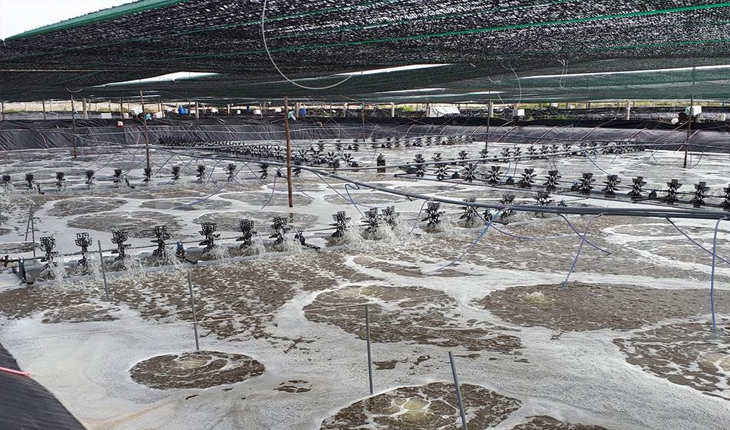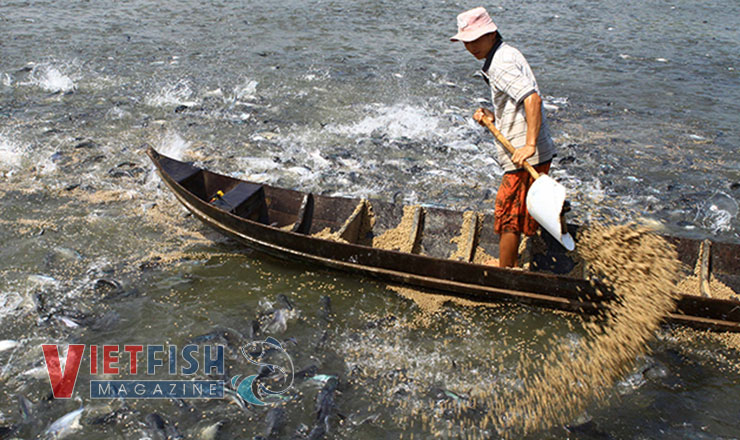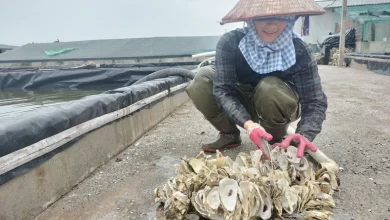How to farm shrimp better in Vietnam?
The failure of shrimp farmers in Vietnam to understand that growing shrimp and fish, while it can be done much the same way it would have been done a thousand years ago, only works when it is done on a very limited scale.
Vietnam is a rich and diverse country resource wise with a long coastline, almost 3500 kms, and the huge Mekong river delta offering many potential opportunities for aquaculture. Indeed most of the fishery in Vietnam consists of aquaculture production.
While many have benefited from this rich and diverse ecology in Vietnam at the same time there is a price that is being paid. Aquaculture practices that are not geared towards sustainability pose a major challenge to the country and its citizens. A very valuable source of hard currency, it is unfortunate that there are far too few farmers who have little understanding of the science of aquaculture, an absolutely necessary element of true sustainability. It is also unfortunate that the term sustainable is bandied about by NGO’s funded by billionaires who use this economic clout to foist their ideas as to what this means on a largely ignorant populace. Critical elements are typically ignored in favor of focusing on social and cultural issues and not what actually constitutes sustainability in the field. While this process is ongoing as progressive change is incremental, the farmers are caught in the middle.
Farming shrimp is not the same as growing rice. Far too many rice farmers are growing shrimp simply because it pays better when it succeeds. While it can be relatively easy this rarely persists beyond a few cycles. Diseases are an inherent part of all agricultural processes. They affect all living things from the smallest to the largest, plants and animals alike. Monoculture agriculture systems that are land based can rely on chemicals, pesticides and other tools to combat this. These are not as easily used in water based production systems. Production in aquatic ecosystems has the added element of water and a multitude of chemical processes that do not occur in land based systems. Failure to consider how these diseases gain entry into production systems and failure to adapt to the altered conditions of culture that they might impose is unfortunately all too wide spread. There is little hope that any segment of the aquaculture industry will be able to be called sustainable if these critical elements are not addressed.
Perhaps one of the most glaring examples is that of a wide spread problem that not only is still spreading but has had huge negative financial consequences on the global farmed shrimp industry. This is the strain of Vibrio parahaemolyticus that carries the genes that encode for the toxin that causes what was coined as Early Mortality Syndrome (EMS).
The first published reports demonstrated that this bacterium was transmitted via infected adults to PLs that succumbed shortly post stocking. We now know much more about this disease process. The pathogen moves through the environment and this very rapidly growing bacterial strain favors accumulated organic matter and detritus. Notably, in some areas of the world a change in the production paradigm has successfully mitigated the problem. It looks very much like the presence of the bacteria responsible for EMS can be impacted in a number of ways. However complacency is unwise as it is probable that something else will come along that thrives on some elements of these eco-manipulated pond ecologies and kills shrimp. Efforts must be taken to permanently break some elements of this cycle.
The steps that need to be taken fall into general categories and in the case of EMS quite a few specifics. There are things that can be done to minimize the chances of this happening. They start with a better understanding of some fundamentals. If you are operating a hatchery/maturation facility with no microscope, no ability to do basic microbiology and water chemistries, then you clearly have not gotten the message. Proper use of the tools of science is the only path to sustainable production. This list is not all inclusive but consider these highlights as described.
- There should be no unrestricted movement of broodstock. Producers should be regulated and only those producing animals under biosecure conditions with appropriate histories, operational SOPs, etc. should be allowed to sell adult animals. This includes tracking animals performance in the field to ensure that the problems that do occur did not originate in the broodstock. The use of wild broodstock should be illegal. It is not worth the biosecurity risk.
- The use of pond reared broodstock that are held in non-biosecure environments should be strictly forbidden and heavily enforced. PCR screening of animals on a population basis is not a suitable barrier. In fact it is all too often represented as being such and has done massive amounts of harm to farmers. This is not to suggest that it has not been helpful. It is however being oversold as a solution when it is a tool.
- Pathogens can appear suddenly and evolve very quickly given the right conditions. “New” pathogens can easily slip through many different barriers, much as has happened with the microsporidian that causes EHP. Vigilance and consistent use of science based tools is critical for proactive disease management.
- Hatcheries need to be “regulated” as well. Archaic outdoor culture of Artemia and algae ensures high levels of bacteria are present, often vibrios species (the major source of problems for farmed shrimp). These bacteria are cultured in production systems and the PLs carry these potential pathogens into the production systems (as is believed to be the case with EMS). A microscope and some tools for counting bacteria are critical tools.
- Standards need to be enforced for acceptable quality and survival during production. Low survival tanks should be destroyed and not pooled. They died for a reason even if the cause is not readily apparent to the hatchery staff.
- The proper use of certain products (such as our PRO4000X) in the hatchery tanks along with the use of certain chemicals-not antibiotics-but disinfectants that break down rapidly in the environment should be routine when other measures fail to control potential pathogen loads. There are far too many products in the market place of questionable usefulness and many that are useless.
- Biosecurity needs to be a routine part of production processes and enforced. It makes no sense to go through the many steps needed to ensure that animals are truly free of specific pathogens only to undo it by ignoring protocols when PLs are harvested and packaged for delivery to farms.
- Certification by audit while it could eventually be a useful component of this needs to evolve and deal with cultural realities. Failure to ensure science based production is not consistent with sustainability.
- Stocking of PLs on farms needs to be coordinated in a manner that ensures that the PLs are not overly stressed during transport and immediately post-stocking.
- Reasonable limits need to be set on farm numbers, size and geographical distribution. These need to be enforceable. Farms should not be on top of each other.
- Outdoor production systems are biosecurity risks. This is inherent in their nature.
- Proper pond design and preparation are essential. Organic matter should not be present at the start of the cycle and every effort made to ensure it does not accumulate. Responsible removal to ensure no environmental impact is important. There is no excuse for dumping polluted water from the farms.
- Stress reduction at all levels of the production process by the proper use of aeration, not over fertilizing, use of water exchange (depends on production system), proper nutrition, etc. is essential for the ability of shrimp to realize their genetic potential.
- Use of lower protein feeds. In most cases feed companies are advocating that Penaeus vannamei be fed protein levels that are much higher than the shrimp need. This increases pollution and costs.
- There is excellent field data that suggests that the impact of EMS can be lessened or even largely negated by the use of small ponds, co-cultivation with Tilapia, modest water exchange rates, better feed management and effective management to prevent the accumulation of organic material.
Clearly it is not possible to detail all of the steps that need to be taken in a short article. While books have been written about this subject following the above guidelines and moving towards a science based production paradigm where proactive disease management is a significant feature can positively impact the bottom line. Without this there is little hope that regardless of the certification schemes that the farms are aligned with that they will truly be sustainable.
Stephen G. Newman Ph.D.
President and CEO
Aquaintech Inc.







I hate my life but at least this makes it bearbale.